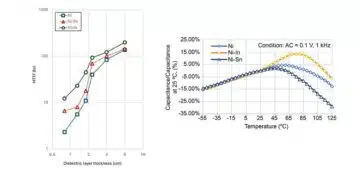source: New Electronics news
A chunk of conductive graphene foam reinforced by carbon nanotubes can support more than 3000 times its own weight and bounce back to its original height, according to Rice University scientists. The material is thermally stable and highly conductive, making it suitable for batteries and other electrical applications.
The Rice lab tested its ‘rebar graphene’ as a highly porous, conductive electrode in lithium ion capacitors and found it to be mechanically and chemically stable. The foam can also be made in any shape and size.
Carbon in the form of atom-thin graphene is among the strongest materials known and is highly conductive; multiwalled carbon nanotubes are widely used as conductive reinforcements in metals, polymers and carbon matrix composites.
“We developed graphene foam, but it wasn’t tough enough for the kind of applications we had in mind, so using carbon nanotubes to reinforce it was a natural next step,” chemist James Tour said.
The 3D structures were created from a powdered nickel catalyst, surfactant-wrapped multiwall nanotubes and sugar as a carbon source. The materials were mixed and the resulting pellets were pressed into a steel die and then heated in a chemical vapour deposition furnace, which turned the available carbon into graphene.
After further processing to remove remnants of nickel, the result was an all-carbon foam in the shape of the die, in this case a screw. According to Tour, the method will be easy to scale up.
Electron microscope images of the foam showed partially unzipped outer layers of the nanotubes had bonded to the graphene, which accounted for its strength and resilience.
Graphene foam produced without the rebar could support only 150 times its own weight while retaining the ability to rapidly return to its full height. Rebar graphene, however, irreversibly deformed by about 25% when loaded with more than 8,500 times its weight.
Featured Image Credit: Tour Group/Rice University































